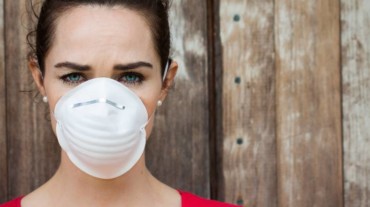
We have spent this whole year living through a pandemic. And ever since it began, we were told that being sick with a fever is one of the most common. And because of that, the use of non-contact infrared thermometers (NCIT) are being widely used to keep a check on the spread of the virus.
But a study by Johns Hopkins Medicine and the University of Maryland School of Medicine made a surprising revelation. Turns out temperature screening when done with a non-contact thermometer is not an effective strategy to stop the spread of COVID-19 virus.
Their findings are published in the journal of the Infectious Diseases Society of America.
Centres for Disease Control and Prevention released guidelines to determine if they needed to seek medical attention for symptoms suggestive of infection with SARS-CoV-2, with temperature screening.
According to their guidelines, fever is defined as a temperature taken with an NCIT near the forehead of greater than or equal to 100.4 degrees Fahrenheit for non-healthcare settings and greater than or equal to 100.0 degrees Fahrenheit otherwise.
An author of the study, William Wright said, “Readings obtained with NCITs are influenced by numerous human, environmental and equipment variables, all of which can affect their accuracy, reproducibility and relationship with the measure closest to what could be called the body temperature or the core temperature, or the temperature of blood in the pulmonary vein.”

Also, read: Does fever come first or cough? This new study has decoded the pattern of covid-19 symptoms
“However, the only way to reliably take the core temperature requires catheterization of the pulmonary artery, which is neither safe nor practical as a screening test,” he added.
“As of Feb. 23, 2020, more than 46,000 travellers were screened with NCITs at U.S. airports, and only one person was identified as having SARS-CoV-2,” told Wright.
From a November 2020 CDC report, Wright with his fellow co-author Philip Mackowiak provided further support for their concern about temperature screenings for covid-19. The report, they said, stated that among approximately 766,000 travellers screened during the period from January 17 to September 13, 2020, only one person per 85,000 — or about 0.001% — later tested positive for SARS-CoV-2.
Select Topics of your interest and let us customize your feed.
PERSONALISE NOWAdditionally, only 47 out of 278 people or about 17% in that group with symptoms similar to SARS-CoV-2 had a measured temperature meeting the CDC criteria for fever.
Another problem with NCITs, Wright said, is that they may give misleading readings throughout the course of a fever that makes it difficult to determine when someone is actually feverish or not.
Also, read: Catching up with coronavirus: From incubation to symptoms, here is the latest on COVID-19
“During the period when a fever is rising, a rise in core temperature occurs that causes blood vessels near the skin’s surface to constrict and reduce the amount of heat they release,” Wright explained. “And during a fever drop, the opposite happens. So, basing fever detection on NCIT measurements that measure the heat radiating from the forehead may be totally off the mark,” he added.
Wright and Mackowiak concluded their editorial by saying that these and other factors affecting thermal screening with NCITs must be addressed to develop better programs for distinguishing people infected with SARS-CoV-2 from those who are not.